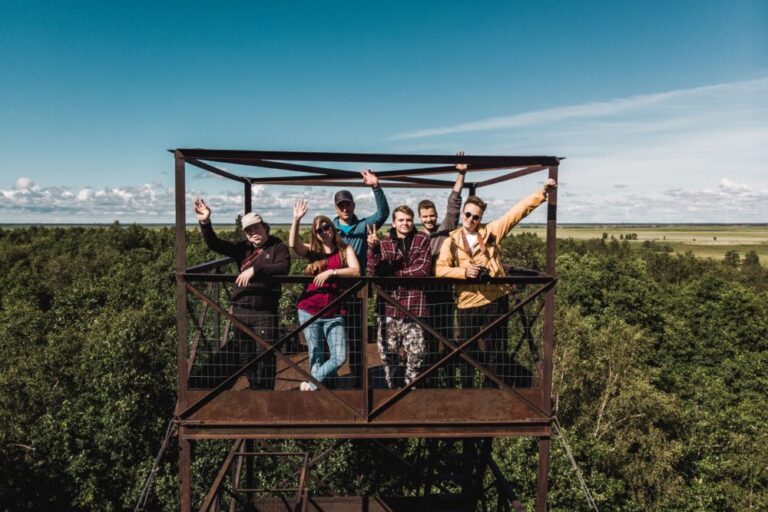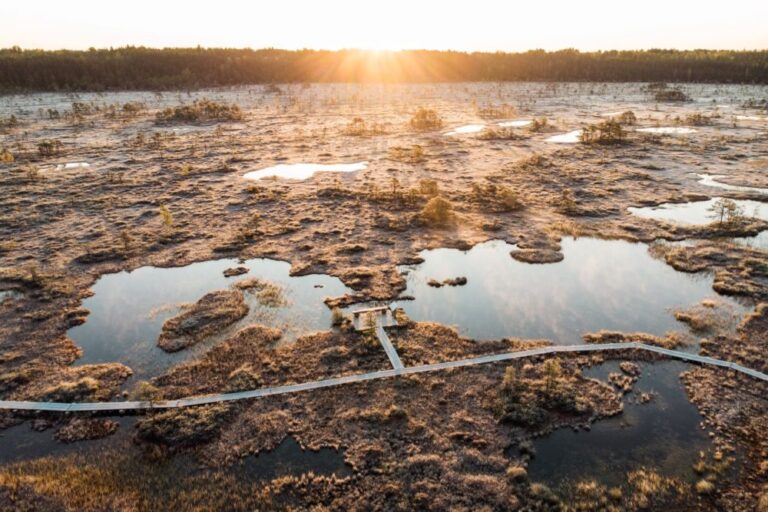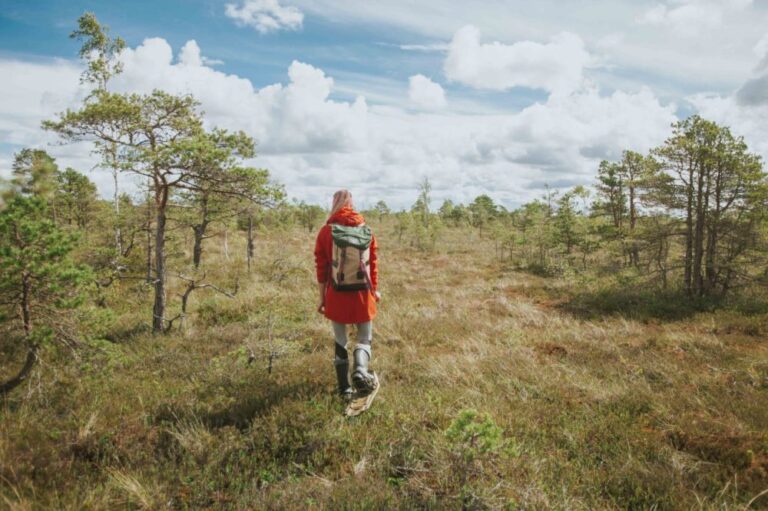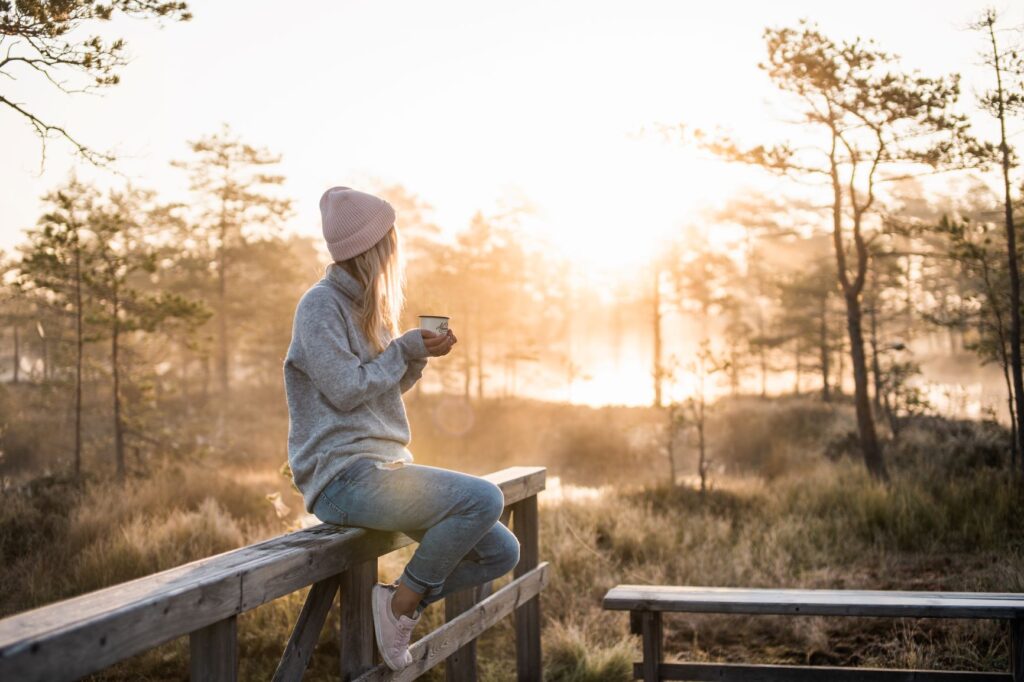Pärnu hiking trails are situated in marvelous places surrounded by nature. A hike in the wilds can help you get away from the city noise and to enjoy beautiful nature sights. An active holiday merely requires a short trip out of town with a visit to a hiking trail. Trails can be found in different lengths and with different characteristics. In Pärnu’s nature you can camp, birdwatch, go bogshoeing, canoeing and much more.
Pärnu hiking trails:
- Penijõe hiking trail (3,2-7 km),
- Kilingi-Nõmme hiking trail (3 km),
- Lake Rae hiking trail (1,7 km),
- Salevere hiking trail (1,5 km),
- Sandra hiking trail (400 m),
- Suitsu hiking trail (1,3 km),
- Tammiste forest trail (2,8 km),
- Tuhu hiking trail (1 km),
- Rannametsa-Tolkuse hiking and study trail (2,2 km),
- Riisa study trail (4,8 km),
- Nigula study trail (6 km),
- Kolga nature trail (1,5 km ja 3,5 km),
- Laiksaare forest study trail (2 km) ,
- Kabli nature study trail (1,8 km),
- Pärnu coastal meadow hiking trail (600 m),
- Tõstamaa hiking trail (5,5 km),
- Kõveri hiking trail (6 km),
- Kaisma exercise track (6 km).

Pärnu is home to more than 18 hiking and study trails that provide a variety of opportunities for recreation in nature. The aim of the hiking trails is to get to know nature better without spoiling it. In addition, the Baltic Coastal Hiking trail runs through Pärnu County, which is part of the European long-distance hiking trail E9.
Hiking trails are safe and easy to traverse – the road usually circles right back to the starting point. You may come across smaller and larger forest denizens who are going about their day at that moment. Pärnu county hiking trails make their way into national parks (Matsalu and Soomaa), into bogs, villages and coastal meadows. Many trails also have viewing platforms which offer breathtaking views for both young and old.
The most popular hiking trails in Pärnu are Tolkuse and Riisa. The Riisa bog hiking trail in Soomaa is made unique by its wide boardwalk and easy accessibility for strollers or wheelchairs.

Hiking trail overview
When visiting Kabli nature study trail, you can also stop at the Kabli Visitor’s Centre which sits in a seaside pine grove.
Nearby is the Kabli Bird Station. If you head to the Kilingi-Nõmme hiking trail, an RMK forest hut is available to rent for up to 6 people.
Kolga study trail is an ideal place to organize short hikes and educational trips.
Laiksaare forest trail offers the opportunity to experince a riparian forest which are rarely found in Estonia. A forest hut for resting is found on the trail.
Starting from Matsalu Visitor’s Centre, Penijõe hiking trail has various routes one can follow. The accompanying viewing platform offers an opportunity to watch one of the most bird-rich areas of Europe.
Nigula study trail, which is located in Nigula bog, allows visitors to follow the goings-on of bog dwellers from a viewing tower.
Rannametsa-Tolkuse hiking and study trail can be completed in 1,5-2 hours with a visit to the 18 meter high viewing tower. From there, one has an excellent view to the Häädemeeste coastal meadow and Pärnu bay, as well as the surrounding Tolkuse bog.
Riisa study trail offers an opportunity to enjoy the stillness found in wetlands and is accessible to prams and wheelchairs.
It’s possible to visit hiking trails in the city, too: the Pärnu coastal meadow boasts a wooden boardwalk with a viewing platform suspended above the wetland. Tammiste hiking trail is well suited as a walking and health trail.

Bog hikes
Many hiking trails are situated in bogs and marshes with opportunities to traverse either the boardwalk or cross the wetland in bogshoes. You can discover the wonders of Estonian nature and learn about the unique natural aspects of Pärnu with a nature guide. Bog hikes are a good way to walk on the bog without damaging the delicate landscape.
Pay attention to the fact that from April 15 to June 15 we have a ‘felling ceasefire’ established in 2002. During the ceasefire, felling activities which disturb nesting are stopped. At the same time, we also hold a ‘bogshoe ceasefire’ started in Soomaa, during which it is discouraged to move in protected bogs with bogshoes.
What is the local hiking etiquette?
- Get familiar with the area beforehand with RMK maps and descriptions
- Plan ahead your route and activities
- Follow public rules of conduct
- Only travel existing roads and trails when possible
- Avoid disturbing others – human or animal
- Bring any trash back with you
- Camp and make fire at designated areas
More tips for good conduct in nature can be found on the RMK website.
